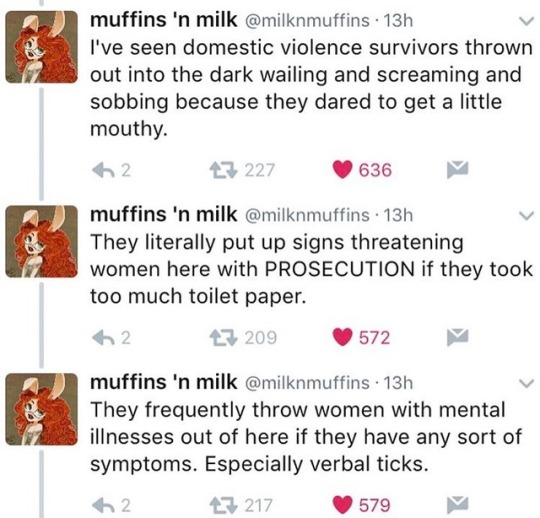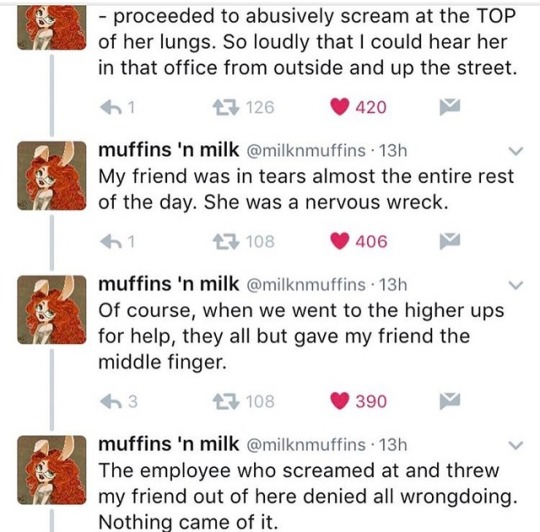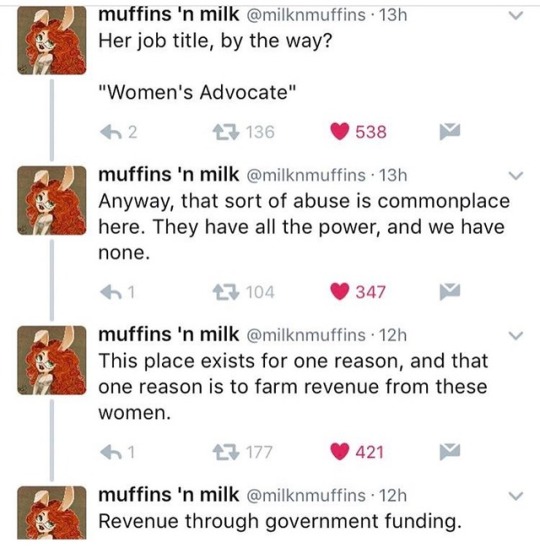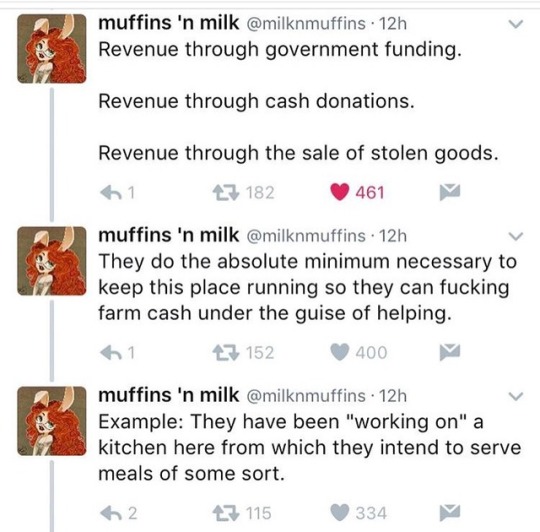#Australian Resources Research Centre
Explore tagged Tumblr posts
Text
The Best News of Last Year - 2023 Edition
Welcome to our special edition newsletter recapping the best news from the past year. I've picked one highlight from each month to give you a snapshot of 2023. No frills, just straightforward news that mattered. Let's relive the good stuff that made our year shine.
January - London: Girl with incurable cancer recovers after pioneering treatment

A girl’s incurable cancer has been cleared from her body after what scientists have described as the most sophisticated cell engineering to date.
2. February - Utah legislature unanimously passes ban on LGBTQ conversion therapy

The Utah State Legislature has unanimously approved a bill that enshrines into law a ban on LGBTQ conversion therapy.
3. March - First vaccine for honeybees could save billions

The United States Department of Agriculture (USDA) has approved the world’s first-ever vaccine intended to address the global decline of honeybees. It will help protect honeybees from American foulbrood, a contagious bacterial disease which can destroy entire colonies.
4. April - Fungi discovered that can eat plastic in just 140 days

Australian scientists have successfully used backyard mould to break down one of the world's most stubborn plastics — a discovery they hope could ease the burden of the global recycling crisis within years.
5. May - Ocean Cleanup removes 200,000th kilogram of plastic from the Pacific Ocean

The Dutch offshore restoration project, Ocean Cleanup, says it has reached a milestone. The organization's plastic catching efforts have now fished more than 200,000 kilograms of plastic out of the Pacific Ocean, Ocean Cleanup said on Twitter.
6. June - U.S. judge blocks Florida ban on care for trans minors in narrow ruling, says ‘gender identity is real’

A federal judge temporarily blocked portions of a new Florida law that bans transgender minors from receiving puberty blockers, ruling Tuesday that the state has no rational basis for denying patients treatment.
7. July - World’s largest Phosphate deposit discovered in Norway

A massive underground deposit of high-grade phosphate rock in Norway, pitched as the world’s largest, is big enough to satisfy world demand for fertilisers, solar panels and electric car batteries over the next 50 years, according to the company exploiting the resource.
8. August - Successful room temperature ambient-pressure magnetic levitation of LK-99

If the claim by Sukbae Lee and Ji-Hoon Kim of South Korea’s Quantum Energy Research Centre holds up, the material could usher in all sorts of technological marvels, such as levitating vehicles and perfectly efficient electrical grids.
9. September - World’s 1st drug to regrow teeth enters clinical trials

The ability to regrow your own teeth could be just around the corner. A team of scientists, led by a Japanese pharmaceutical startup, are getting set to start human trials on a new drug that has successfully grown new teeth in animal test subjects.
10. October - Nobel Prize goes to scientists behind mRNA Covid vaccines

The Nobel Prize in Physiology or Medicine has been awarded to a pair of scientists who developed the technology that led to the mRNA Covid vaccines. Professors Katalin Kariko and Drew Weissman will share the prize.
11. November - No cases of cancer caused by HPV in Norwegian 25-year olds, the first cohort to be mass vaccinated for HPV.
Last year there were zero cases of cervical cancer in the group that was vaccinated in 2009 against the HPV virus, which can cause the cancer in women.
12. December - President Biden announces he’s pardoning all convictions of federal marijuana possession

President Joe Biden announced Friday he's issuing a federal pardon to every American who has used marijuana in the past, including those who were never arrested or prosecuted.
------
And there you have it – a year's worth of uplifting news! I hope these positive stories brought a bit of joy to your inbox. As I wrap up this special edition, I want to thank all my supporters!
Buy me a coffee ❤️
Merry Christmas and Happy New Year!
6K notes
·
View notes
Text
How Peter Duton has consistently Voted in parliament
Spoiler: He hates you Not everything is terrible, but holy shit it gets bad and a lot of it is bad (Source at the bottom)
Voted for:
A citizenship test
A plebiscite on the carbon pricing mechanism (Remove the tax on carbon)
A same-sex marriage plebiscite (plebiscite means to get rid of)
An Australian Building and Construction Commission (ABCC)
Carbon Farming Initiative Amendment Bill 2014
Charging postgraduate research students fees
Civil celebrants having the right to refuse to marry same-sex couples
Compensating victims of overseas terrorism since the September 11 attack
Decreasing availability of welfare payments
Deregulating undergraduate university fees (Removing any restrictions on the amount that universities can charge students for tuition)
Drug testing welfare recipients
Getting rid of Sunday and public holiday penalty rates
Greater control over items brought into immigration detention centres
Having a referendum on whether to create an Indigenous Voice to Parliament (To be fair he also did recently have a trantrum because he didn't want to stand infrount of the Aboriginal flag, so)
Increasing eligibility requirements for Australian citizenship
Government administered paid parental leave
Increasing indexation of HECS-HELP debts (HECS-HELP is basically student loans)
Increasing state and territory environmental approval powers
Increasing the cost of humanities degrees (Humanities include: History, Geography, Philosophy, Religion, Citizenship, Economics, Business, ect)
Increasing the price of subsidised medicine
Prioritising religious freedom
Privatising government-owned assets
Putting welfare payments onto cashless debit cards (or indue cards) on a temporary basis as a trial
Recognising local government in the Constitution
Reducing the corporate tax rate
Senate electoral reform
Stopping people who arrive by boat from ever coming to Australia
Temporary Exclusion Orders
Temporary protection visas
The territories being able to legalise euthanasia
Turning back asylum boats when possible
A combined Federal Circuit and Family Court of Australia
Banning mobiles and other devices in immigration detention
Increasing scrutiny of unions
Implementing refugee and protection conventions
Putting welfare payments onto cashless debit cards (or indue cards) on an ongoing basis
Privatising certain government services
Voluntary student union fees
Increasing funding for road infrastructure
Increasing the initial tax rate for working holiday makers to 19%
Increasing the Medicare Levy to pay for the National Disability Insurance Scheme
Making more water from Murray-Darling Basin available to use
The Coalition's new schools funding policy ("Gonski 2.0")
The Intervention in the Northern Territory
Voted against:
A carbon price
A minerals resource rent tax
A Royal Commission into Violence and Abuse against People with Disability
A transition plan for coal workers
Banning pay secrecy clauses
Capping gas prices
Carbon farming
Considering legislation to create a federal anti-corruption commission (procedural)
Considering motions on Gaza (2023-24) (procedural)
Criminalising wage theft
Decreasing the private health insurance rebate
Doctor-initiated medical transfers for asylum seekers
Ending illegal logging
Ending immigration detention on Manus Island
Extending government benefits to same-sex couples
Federal action on public housing
Federal government action on animal & plant extinctions
Increasing availability of abortion drugs
Increasing consumer protections
Increasing funding for university education
Increasing housing affordability
Increasing investment in renewable energy
Increasing legal protections for LGBTI people
Increasing marine conservation
Increasing penalties for breach of data
Increasing political transparency
Increasing protection of Australia's fresh water
Increasing restrictions on gambling
Increasing scrutiny of asylum seeker management
Increasing support for the Australian film and TV industry
Increasing support for the Australian shipping industry
Increasing the diversity of media ownership
Increasing trade unions' powers in the workplace
Increasing transparency of big business by making information public
Market-led approaches to protecting biodiversity
Net zero emissions by 2035
Re-approving/ re-registering agvet chemicals (Agvet chemicals protect crops and livestock)
Removing children from immigration detention
Reproductive bodily autonomy
Requiring every native title claimant to sign land use agreements
Restricting donations to political parties
Restricting foreign ownership
Same-sex marriage equality
Stem cell research
Stopping tax avoidance or aggressive tax minimisation
The Australian Renewable Energy Agency (ARENA)
The Carbon Pollution Reduction Scheme
The Paris Climate Agreement
Tobacco plain packaging
Transgender rights
Treating the COVID vaccine rollout as a matter of urgency
Mix
Reducing tax concessions for high socio-economic status
Increasing competition in bulk wheat export
Mostly Yes
Speeding things along in Parliament (procedural)
Unconventional gas mining
A character test for Australian visas
Increasing or removing the Government debt limit
Regional processing of asylum seekers
Mostly No
Increasing the age pension
Net zero emissions by 2050
Suspending the rules to allow a vote to happen (procedural)
Vehicle efficiency standards
Increasing support for rural and regional Australia
Letting all MPs or Senators speak in Parliament (procedural)
Source
https://theyvoteforyou.org.au/people/representatives/dickson/peter_dutton
#peter dutton#aus pol#australian politics#auspol#australian election#election#election 2025#politics#australia
33 notes
·
View notes
Text
hi!
this is going to be a very small intro post, but this is my blog centred around learning about shinto, in hopes of incorporating it into my life. i have a very poor memory, so i figured having a place to put resources and thoughts would be a good idea, on top of any other research i do.
i'm a nearly 30 year old australian, and my pronouns are he/him. thank you for having me. ✨
2 notes
·
View notes
Text
This paper will concentrate on the policy we have identified, entitled “Transformative ICT and Education Policy”. The code reference for this study is ICT4E. It was formed and began operating effectively from June 28, 2005, as an education policy in Australia that is accessible online. The policy is available on the URL http://apo.org.au/node/25007. It is downloadable as a html web page or a portable or protected data file. 1.2. History and background The policy emerged from an analysis of the elements of the current generation. The society was being changed using Information Technology and communication. The Federal Australian government discovered that Information and communication technology favored other important aspects of development such as the economy, work environment, residential homes and businesses, the affairs of the government, medical sector and transportation. It however neglected the area of education. The government then decided to make it a policy in country to provide support to the education sector by application of information technology. In 2004, the government began the strategic plan of making the transformative educational ICT policy a reality in the entire nation of Australia (Ball, 2008). In the recent and the current educational sector, the educational policy has been addressing the issue of computer proficiency to transform the students from novices to experts. Students use information technology to share educational resources, to communicate effectively and to socialize with others. The policy offers influential centre stages in the position of advanced studies. This study focuses on improving design at universities. The implementation of the education policy on Information and Communication Technology works in three different levels of priority (Tomei, 2010). 1.3. Aims of the policy The policy aims at improving the education quality among students in the education institutions. The main aim is to ensure that the composition of human resources is highly equipped for quality performance in work places. It also aims at improving the processes of research and educational trainings. This was to promote the green agenda while reducing the cost of document printing on papers. Minimal paper use was seen as a means of protecting the environment from degradation, because it implied reduced cutting of trees (Pelgrum & Law, 2003; Abbott, 2001). 1.4. Funding Arrangement and structure The federal Australian government of Australia identified the financial aspect of the policy as a critical challenge. The challenge was to do with establishment of ICT environments in all learning institutions with the international standards of set up. Funding of the program officially takes place through Digital learning revolution with an aim to create a direct contact of one on one. The educational sector conducts massive procurement of the devices and softwares at discounted rates, to reduce the size of the budget (Jimoyiannis, 2011). 1.5. Implementation Process Top of Form The implementation of this project makes use of 5 projects to enable teachers as well as the school administration to make the optimal utilization of ICT in the learning environment such as a typical classroom. Read the full article
0 notes
Text
How ASX Blue chip Stocks Shape the Core of the Australian Market
ASX Bluechip stocks represent some of the most established companies on the Australian Securities Exchange. Known for their long-term operational history, strong governance practices, and significant market capitalisation, these firms are central to Australia’s business landscape. Their consistent performance and enduring presence across industries highlight their importance in both domestic and global markets.
These companies typically operate with large-scale infrastructure, broad customer bases, and well-diversified business models. Their contribution to the Australian economy is considerable, both in terms of employment and influence on financial markets. While the market experiences various fluctuations, these businesses tend to maintain a level of resilience that distinguishes them from others.
Understanding ASX Bluechip Stocks
ASX Bluechip stocks are usually defined by their leadership in specific sectors, consistent revenue generation, and operational reliability. They tend to have well-established reputations, often built over decades of corporate growth. These firms are frequently included in market indices such as the S&P/ASX 200, which reflects their importance within the broader economic framework.
Unlike emerging or speculative companies, ASX Bluechip stocks are grounded in proven business practices. Their ability to navigate economic shifts while maintaining stable operations has made them integral to Australia’s corporate environment. Moreover, these firms are typically subject to rigorous governance standards and transparent reporting, fostering trust across the market.
Financial Services at the Core
The financial services sector is one of the most heavily represented among ASX Bluechip stocks. Large banks and financial institutions have maintained a significant presence on the exchange, with operations that extend across commercial banking, insurance, and asset servicing. Their role in supporting economic activity through lending, deposits, and digital solutions places them at the centre of financial intermediation.
These firms have also embraced technology to stay relevant in a rapidly evolving environment. Whether through mobile platforms, cloud-based operations, or financial automation, ASX Bluechip stocks in the financial sector continue to modernise their systems while maintaining their position on the exchange.
Materials and Mining as Economic Drivers
Mining and materials companies form another crucial segment of ASX Bluechip stocks. Australia’s vast natural resources have allowed firms in this space to thrive, particularly in the extraction and export of commodities such as iron ore, coal, and copper. These companies not only serve domestic industrial needs but are also vital suppliers to international markets.
The global demand for raw materials, especially from countries in the Asia-Pacific region, has reinforced the relevance of ASX Bluechip stocks in the mining sector. Many of these firms have invested in large-scale infrastructure, including ports and railways, to streamline supply chains and sustain their competitive edge.
Healthcare and Innovation
The healthcare sector holds a significant place within ASX Bluechip stocks. Biotechnology firms and pharmaceutical manufacturers with an international footprint have driven innovation in diagnostics, treatments, and medical research. Their investment in R&D has led to breakthroughs with global applications, strengthening Australia's standing in life sciences.
These companies operate under stringent regulatory compliance and often collaborate with global institutions. Their laboratories, manufacturing facilities, and clinical trial networks span multiple continents. Among ASX Bluechip stocks, healthcare firms demonstrate resilience due to consistent demand for essential medical solutions.
Consumer Staples and National Reach
Retail companies, particularly those focused on essential goods, are also a notable part of Australia's leading companies. These businesses run extensive supermarket chains, distribution centres, and logistics networks that keep daily essentials available nationwide. Their efficient operations and long-standing customer relationships reinforce their relevance across economic cycles.
During periods of uncertainty, ASX Bluechip stocks in the consumer staples segment often maintain stable activity. Their supply chains are robust, and their product categories remain in consistent demand, supporting their continued influence on Australia’s retail landscape.
Telecommunications and Infrastructure
The telecommunications industry features several companies under ASX Bluechip stocks, known for providing digital infrastructure across Australia. These businesses offer mobile connectivity, broadband, and enterprise solutions, enabling both personal and commercial communication.
As demand grows for faster and more reliable data services, ASX Bluechip stocks in this sector continue to invest in 5G, fibre-optics, and edge computing. Their infrastructure supports millions of users and plays a vital role in modern digital connectivity and transformation.
These companies reflect the strength, maturity, and industrial diversity of the Australian economy. Their presence in vital sectors—such as finance, mining, healthcare, retail, and telecommunications—demonstrates the depth of capability within the exchange. They have shaped domestic commerce while extending their influence internationally. With operational scale, transparency, and resilience, these businesses remain foundational to Australia's corporate framework.
0 notes
Text
Essential Guide to Retirement Planning and System's Report
The article highlights the challenges faced by Retirement Planning Systems around the world and in particular makes reference to the findings in the 2015 Melbourne Mercer Global Pension Index report conducted by the Australian Centre for Financial Studies in conjunction with Mercer.

The Index provides a valuable contribution to the global debate about how to best provide for an ageing population and the retirement income systems of 25 countries were researched and compared. Australia gets an overall ranking of third and a B+ in the study, closely behind Denmark in first place and Netherlands second, with the first and second place getters each receiving an A grading.
The most recent Index released some of their following thoughts on different Pension systems from around the world.
The report highlights that many governments are currently undertaking significant reforms in their retirement income systems due the many pressures being placed on the systems as a result of:
Their ageing populations arising from lower fertility rates and increasing life expectancies
Increased government debt in some countries
Uncertain economic conditions
Record low interest rates
A global shift towards greater individual responsibility with defined contribution plans
Resource URL - https://virtusuper.com.au/work/our-retirement-systems-report-card-is-in/
#smsf brisbane#self managed super fund brisbane#smsf insurance#self managed super fund australia#smsf accountant brisbane#self managed super funds brisbane#retirement planning brisbane#smsf accountants brisbane#virtu super#smsf specialist advisor
0 notes
Photo
This is NOT endemic to the American Salvation Armies! Multiple countries around the world that have a Salvation Army presence often report similar issues, alongside groups such as Red Cross and d other major charities that have become big enough to be a corporate entity.
Around Australia, it is firmly believed that if you want to BUY something that supports someone, go to a charity warehouse when on sale. There are fashion auctions, food auctions, raffles at fetes. If you want something to go to the poor, impoverished and those who can’t look after themselves in any such situation, you either find away to give to a friend, give to a family member, or make the decision to look further into it and put you energy where it will have a result.
(I must say, American Soup Kitchens are impressive for this reason - so much messing about with money and laws and papers, and some guy with a food van pulls up and gives everyone waiting in line for a meal as long as they take a sticker? Amazing. Genuinely impressed by this.)
There are other charities out there, who are honest, and maybe one day they’ll be listed by country in the tags?
Ronald McDonald House (AUS)
The foundation that helps families stay with their sick children for free at associated lodgings near remote or city hospitals. My mother stayed at one for my brother’s entire hospital stay. Maccas may not be the best, but McDonald house is seperate.
Rural Flying Doctor/Royal Flying Doctor/‘Angel Flight’ (AUS/CAN/NZ)
Response personnel for remote areas and emergencies - only some of their groups receive funding from governments. Royal Flying Doctors are the most prestigious, and Angel Flight is considered a ‘private company’ despite being very dedicated to the cause, so supporting them will be a matter of research and helping their volunteer numbers grow.
Rural Fire Service(RFS)/Special Emergency Services(SES)/Rural Fire Brigade/Volunteer Firefighters (AUS/?)
Very few firefighters are permanent employees, but they will arrive for any and all emergencies. Firefighters will even turn up to riots, crashes, building collapses, live burials and bomb threats. They are the true emergency response. I know some stations have poor attitudes and terrible treatment of staff and civilians, but that is exceedingly rare as Australian relies on the volunteers and not the permanents in times of crisis - see recent bushfire catastrophes, and yes, plural.
For Homelessness, Domestic Abuse, Mental Illness, and Drug related matters, Australia has a variety of possible charities and organisations.
Headspace - youth mental health and support
Beyond Blue - suicide hotline
White Ribbon - Domestic Violence charity, that collated the national and state support lines, laws, and resources into a specific banner.
Homelessness Australia and Mission Australia - both separate organisations, but both have a goal of either supporting an individual to get them off the streets, give financial advice and support in times of need, and a collation of national and state services and support.
National Drug and Alcohol abuse hotline- gets directed to local services, of which my local regional area has around five rehab centres, and given directions and dialled through to effective doctors and treatments.
Unfortunately, when it comes to international charities, it’s a harder game. And I do not know enough to help you there.










DO NOT SUPPORT SALVATION ARMY
441K notes
·
View notes
Text
Unlocking the Potential of Whey to Reduce Food Waste
Research suggests that transforming whey waste from the Australian dairy industry into valuable food products is more viable than previously thought, with the potential to drive significant industry-wide change.
Whey, a by-product of cheese production, is one of the largest contributors to food loss and waste in the Australian dairy sector. It is the liquid that remains after milk is curdled and strained during cheese and yoghurt manufacturing.

A key finding from my research is that only a small number of cheese manufacturers, regardless of their production scale, have embraced innovative technologies and business models to upcycle whey, Hetherington explains.
The broader industry has been slow to adopt these practices due to unclear incentives, persistent challenges, and a lack of supportive conditions. However, with increased collaboration and targeted support, significant change could happen relatively quickly.
Addressing Food Waste in the Dairy Sector
The dairy industry is a major contributor to Australia’s overall food loss and waste, accounting for approximately 14.9% of the total, with whey making up nearly half of this figure, according to Dairy Australia.
Funded by the University of Adelaide, the End Food Waste Cooperative Research Centre, and CSIRO, Hetherington’s study involved interviews with cheese manufacturers across Australia. His goal was to understand how they handle whey waste and what influences their decisions regarding its reuse.
He explored four business models to reduce whey waste:
In-house processing – Manufacturers process whey within their own facilities.
Third-party partnerships – Whey is sold or given to another business for further processing.
Joint ventures – Manufacturers collaborate to share processing infrastructure and scale up operations.
Focal companies – Existing whey processors accept whey from multiple cheesemakers, improving efficiency and reducing waste.

All four models ultimately serve the same purpose: turning whey waste into a valuable resource, Hetherington says.
Industry and Consumer Opportunities
Manufacturers already processing whey could take the lead by accepting whey from nearby cheesemakers, demonstrating industry leadership while generating additional revenue. “One business I spoke to actually makes more money from whey than from cheese—there’s immense potential here,” Hetherington adds.
Retailers, including supermarkets, could also play a role by adjusting procurement policies to favor whey-based alternatives, encouraging broader industry adoption. Meanwhile, consumers can contribute by choosing whey-based products.
Overcoming Regulatory Barriers
Streamlining regulations could make it easier for cheesemakers and other sectors to capitalize on these opportunities.
“While some regulations, such as waste levies, encourage change, others—like food safety laws and alcohol taxation—can create obstacles,” Hetherington explains.
“Improving circularity in our food system could unlock economic benefits for the industry while allowing us to do more with fewer resources. However, this requires new forms of collaboration and the right incentives to overcome challenges and drive investment in change. Addressing food loss and waste is a complex and evolving issue—there’s no single solution.
FAQs:
1. What is whey, and why is it considered waste?
Whey is a by-product of cheese and yoghurt manufacturing. It is the liquid that remains after milk is curdled and strained. In the Australian dairy industry, whey is one of the largest sources of food loss and waste, contributing significantly to overall food waste in the country.
2. Why is there growing interest in repurposing whey?
Research suggests that converting whey waste into valuable food products is more feasible than many realize. There are multiple high-value reuse options, including protein powders, alcoholic beverages (such as beer or vodka), kombucha, and cooking stocks. If adopted widely, these innovations could lead to significant industry-wide change.
3. What did the research by Jack Hetherington uncover?
Jack Hetherington, from the University of Adelaide’s Centre for Global Food and Resources, found that only a small number of cheese manufacturers have embraced innovative technologies and business models to upcycle whey into profitable products. The broader industry has been slow to adopt these practices due to unclear incentives, persistent barriers, and a lack of supportive conditions.
4. How much of Australia’s food waste comes from the dairy sector?
The dairy sector accounts for an estimated 14.9% of Australia’s total food loss and waste, according to Dairy Australia. About half of this dairy waste is whey.
5. What are the main challenges preventing whey reuse?
Some of the key barriers include:
Lack of clear financial incentives
Regulatory and taxation hurdles
Limited infrastructure for whey processing
Low awareness of the economic potential of whey-based products
6. What are the possible solutions for reducing whey waste?
Hetherington’s study explored four potential business models to encourage whey repurposing:
In-house processing: Manufacturers process whey within their own facilities.
Third-party partnerships: Whey is sold or given to another business for further processing.
Joint ventures: Manufacturers collaborate to share processing infrastructure and scale up operations.
Focal companies: Established whey processors accept whey from multiple cheesemakers to improve efficiency and reduce waste.
Conclusion:
The research highlights a significant opportunity for the Australian dairy industry to transform whey waste into valuable food products, reducing food loss while creating economic benefits. Despite existing barriers—such as regulatory challenges and a lack of clear incentives—several innovative business models could help the industry capitalize on whey’s potential. Increased collaboration, streamlined policies, and industry leadership will be key to driving widespread change.
By embracing whey-based alternatives, manufacturers, retailers, and consumers alike can contribute to a more sustainable and efficient food system. Addressing food waste remains a complex challenge, but with the right strategies in place, the dairy sector can play a vital role in promoting a circular economy and reducing environmental impact.
Reference Links: https://www.newswise.com/articles/unlocking-the-potential-of-whey-to-reduce-food-waste https://link.springer.com/article/10.1007/s11157-024-09687-2
0 notes
Text
youtube
Unlocking Salt Water | Mark Tester | TEDxKAUST Professor Tester elegantly articulates the current problem of depleting fresh water resources and increasing food demand. His solution to solving food and water security issues is to unlock the salt-tolerant capabilities of various agricultural crops.
After a Ph.D. in Cambridge and lectureship there, he went to Adelaide, as a Research Professor in the Australian Centre for Plant Functional Genomics and Director of the Australian Plant Phenomics Facility. Mark led the establishment of this Facility, a $55m organisation that develops and delivers state-of-the-art phenotyping facilities, including The Plant Accelerator, an innovative plant growth and analysis facility. In his research group, forward and reverse genetic approaches are used to understand salinity tolerance and improve this in crops such as barley and tomatoes. His aspiration is to develop a new agricultural system where brackish water and seawater can be unlocked for food production.
0 notes
Text
Top 3 Management Assignment Help Providers in Australia for Students

Students studying management frequently find themselves juggling a lot of tasks in the fast-paced world of academics, such as coursework and internships, all while attempting to balance their personal and academic life. The demanding nature of management courses can be daunting, particularly regarding assignments that call for a thorough comprehension of business ideas, critical thinking, and in-depth analysis. For students who want to succeed academically, having dependable management assignment help becomes essential as deadlines approach.
Australia has developed as a centre for high-quality educational services, including assignment help providers, thanks to its globally recognized universities and diversified student body. They provide professional advice, resources, and support to guarantee that assignments are finished to the best possible standard. This blog post aims to examine the top three Australian providers of “business management assignment help” and emphasize their unique qualities, as well as the reasons for their widespread trust among students.
1. My Assignment Help
My Assignment Help is one of the most well-liked and reliable sources of “management assignment help in Australia”. With a large staff of knowledgeable experts, including PhD holders and business leaders, My Assignment Help provides thorough assistance in a range of management specialties, including operations, marketing, finance, and human resources.
Furthermore, My Assignment Help has a reputation for providing assignments on time, guaranteeing that students fulfil their deadlines without sacrificing quality. Whether it's a project, essay, or case study, My Assignment Help constantly produces excellent work that is suited to the assignment's particular criteria.
My Assignment Help offers students access to a wealth of academic resources, including articles, sample papers, and research materials, in addition to their comprehensive assignment assistance services. The platform has become a popular option for students looking for “management assignment help” that goes above and beyond simply meeting deadlines because of its dedication to improving the learning experience.
Important characteristics:
round-the-clock client assistance
Free reports on plagiarism
Reasonably priced with regular savings
availability of many free academic resources
2. AssignmentHelp4Me
AssignmentHelp4Me is another reputable name in the industry for business management assignment help. It is well known that this business is committed to offering solutions that are specifically tailored to meet the demands of every student. Our team of professionals at AssignmentHelp4Me can handle any type of project, from sophisticated financial analyses to business strategy assignments.
AssignmentHelp4Me is distinguished by its dedication to excellence. The service guarantees the best academic standards by conducting extensive research, organizing each task properly, and carefully proofreading it. Furthermore, students can ask for changes until they are satisfied with the finished work if AssignmentHelp4Me does not meet their expectations according to its satisfaction guarantee.
In addition to offering extensive assignment assistance, AssignmentHelp4Me is renowned for its user-centric methodology. They provide thorough comments on finished assignments, assisting students in identifying areas for development and gaining knowledge that they may use in subsequent projects. For students in need of “business management assignment help”, AssignmentHelp4Me is a great option because of its emphasis on learning and development.
Important characteristics:
proficiency in a variety of management-related fields
timely delivery, especially in cases with short notice
Assurance of confidentiality and privacy
All-inclusive revision guidelines
3. The Assignment Help
For students looking for trustworthy management assignment help in Australia, The Assignment Help is a strong contender. This firm takes pleasure in providing students with assignments that not only satisfy academic standards but also foster a deeper comprehension of management topics. Professionals with a wealth of expertise in academics and business make up The Assignment Help team, guaranteeing that students obtain projects with a solid foundation in practical applications.
It is especially well-known that The Assignment Help has an easy-to-use platform that allows students to follow their assignments, place orders, and contact with specialists. The program also provides a variety of extra tools, like study guides and sample papers, to help students even further with their academic endeavours.
The Assignment Help is a reliable source of “management assignment help” since it guarantees that students present high-quality work and improve their knowledge and comprehension of important management ideas by providing thorough explanations and follow-up support.
Important characteristics:
Availability of subject-matter expertise
Completely unique content with a stringent anti-copying policy
24/7 assistance for pressing questions
Money-back promise in case of subpar service
Conclusion
Having access to high-quality business management assignment help can have a big impact on a student's academic performance in the competitive field of management studies. The three Australian providers—My Assignment Help, AssignmentHelp4Me, and The Assignment Help—are among the best; they provide professional advice, prompt delivery, and tailored solutions that address the requirements of management students. Students can focus on confidently accomplishing their academic goals and reduce the stress of difficult tasks by selecting a reliable assignment assistance service.
#best assignment writing services#custom essay help#law assignment help#write my thesis for me#paper writing services#scholarship essay help#mba essay help
0 notes
Text
Understanding Medical Coding Course Fees in Kochi

The Importance of Medical Coding:
Medical coders are vital in the healthcare industry, translating patient visits, procedures, and diagnoses into accurate codes. This ensures efficient billing, minimizes errors, and maintains compliance with insurance and regulatory standards.
Medical Coding Course Fees in Kochi:
Average Costs Medical coding course fees in Kochi vary depending on several factors. Typically, basic courses range from INR 20,000 to INR 50,000. Advanced and specialized courses, however, may cost INR 1 lakh or more. It's crucial to research different programs to find one that aligns with both your budget and career goals.
Factors Influencing Fees:
Institution Reputation: Established institutes with high success rates often have higher fees.
Course Duration: Longer courses with comprehensive curriculums are usually more expensive.
Certification Level: Courses offering industry-recognized certifications tend to cost more.
Study Materials: Courses including extensive study materials and exam preparation resources may charge higher fees.
Accreditation: Ensure the course is accredited by a recognized authority.
Curriculum Quality: A wide-ranging, up-to-date curriculum can affect costs.
Job Placement Assistance: Programs offering job placement or internship opportunities might have higher fees.
Why Choose Transorse Solutions?
Discover the excellence of the Australian Medical Coding Training Centre in Kochi with Transorse Solutions. Our programs are designed to provide top-quality education at competitive prices, ensuring you receive the best value for your investment. With expert instructors, comprehensive curriculums, and career support, we help you launch a successful career in medical coding. Explore our offerings to find the perfect fit for your professional aspirations and budget.
0 notes
Text
Finding the Right Fit: NDIS Service Providers in NSW for You or Your Loved One

The National Disability Insurance Scheme (NDIS) empowers Australians with disabilities to access the support they need to live a fulfilling and independent life. Here at Malaika Health Care, a registered NDIS provider in NSW, we understand the importance of finding the right service providers to achieve your goals.
This blog aims to guide you through the process of finding qualified NDIS service providers in NSW. We'll explore different aspects to consider, resources available, and how Malaika Health Care can be your partner in navigating the NDIS.
Understanding Your Needs
The first step is to identify your specific needs and goals. Whether it's assistance with daily living tasks, support for social participation, or therapy services, a clear understanding of your requirements will help you find providers who specialise in those areas.
The NDIS website provides a helpful guide to [different types of NDIS supports](URL ndis supports ON Australian Government ncis.gov.au), allowing you to explore various categories and identify relevant services.
Exploring Your Options: Registered NDIS Providers in NSW
There are numerous registered NDIS service providers across NSW, each with their own areas of expertise. Here are some resources to help you explore your options:
NDIS Provider Finder: The official NDIS website offers a user-friendly search tool – the NDIS Provider Finder – to locate registered providers in your area based on your specific needs (https://www.ndis.gov.au/participants/working-providers/find-registered-provider).
Local Disability Organisations: Many local disability organisations maintain directories of service providers in their communities. Reaching out to them can provide valuable insights into providers with a strong local presence and understanding of the specific challenges faced by people with disabilities in your region.
Choosing the Right Provider: Beyond Qualifications
While qualifications are essential, consider these additional factors to ensure a good fit:
Service Delivery Approach: Does the provider's approach resonate with your values and preferences? Do they prioritise client-centred care and collaborative goal setting?
Experience and Expertise: Look for providers with experience working with disabilities similar to yours.
Communication Style: Open and transparent communication is key. Is the provider easy to understand and responsive to your questions?
Location and Accessibility: Consider the provider's location and accessibility. Will it be convenient for you to attend appointments or receive services in your home?
How Malaika Health Care Can Help
Malaika Health Care is a registered NDIS provider in NSW, specialising in delivering high-quality support services to people with disabilities. We pride ourselves on:
A Client-Centred Approach: We believe in building strong relationships with our clients, understanding their unique needs, and working collaboratively to achieve their goals.
A Diverse Team of Qualified Professionals: Our team comprises experienced professionals with expertise in various areas, ensuring we can tailor our support to your specific needs.
Flexible Service Delivery: We offer services in your home or community setting, adapting to your preferences and circumstances.
Taking the Next Step
Finding the right NDIS service providers can feel overwhelming, but with the right resources and approach, you can navigate the process with confidence. Here are some next steps:
Contact NDIS: If you're new to the NDIS, contact the National Disability Insurance Agency (NDIA) on 1800 800 110 for guidance and support.
Develop a Shortlist: Based on your research, create a shortlist of potential providers.
Make Contact: Reach out to your shortlisted providers and inquire about their services, experience, and fees. Some providers may offer consultations to discuss your needs in more detail.
Malaika Health Care is Here for You
At Malaika Health Care, we're committed to empowering individuals with disabilities to live a life of choice and independence. If you're looking for NDIS service providers in NSW who prioritise your well-being and goals, we invite you to contact us for a no-obligation discussion. We believe in building strong partnerships with our clients and working together to create a brighter future.
0 notes
Text
Australian Bamboo Clothing: Are You Paying More for Sustainability or Hype?
In the ever-evolving fashion world, Australian bamboo clothing has taken centre stage, capturing attention with promises of comfort, breathability, and sustainability. But with a higher price tag than traditional cotton clothing, a question arises: are you paying more for genuine sustainability or simply for the hype? Let's delve deeper into the world of Australian bamboo clothing, exploring its benefits, drawbacks, and environmental impact to help you make an informed decision.
The Allure of Australian Bamboo Clothing
Australian bamboo clothing boasts a unique blend of comfort and style. Made from the fibres of the bamboo plant, it offers a luxuriously soft feel that rivals cotton. But the advantages extend beyond mere softness. Australian bamboo clothes is naturally breathable, allowing air to circulate freely and keeping you cool and dry, which is especially important in the hot Australian climate. Bamboo fibres are moisture-wicking, drawing sweat away from your skin and preventing that uncomfortable clammy feeling.
Sustainability: The Heart of Australian Bamboo Clothing
The appeal of Australian bamboo clothing goes beyond comfort. Bamboo is a fast-growing, renewable resource that requires less water and pesticides than cotton. This makes Australian bamboo clothing a more sustainable choice for eco-conscious consumers. Bamboo plants absorb significant amounts of carbon dioxide, contributing to a greener footprint.
Is It All Hype? Examining the Drawbacks of Australian Bamboo Clothing
While Australian bamboo clothing offers numerous advantages, there are a few things to consider before making a purchase:
Cost: Australian bamboo clothing can be more expensive than traditional cotton clothing. However, the increased comfort, durability (when cared for properly), and potential health benefits (for those with sensitive skin) may justify the cost for some.
Processing Matters: The environmental impact of Australian bamboo clothing can vary depending on the processing methods used. To minimise environmental impact, look for brands that use closed-loop production systems and eco-friendly dyes.
Blends vs. Pure Bamboo: Many Australian bamboo clothing options are blends of bamboo and other materials like cotton or spandex. Other materials can affect the garment's breathability and softness. Look for a high percentage of bamboo (ideally over 50%) for the most comfort and breathability benefits.
Australian Bamboo Clothing: Beyond the Hype
Despite potential drawbacks, Australian bamboo clothing offers a compelling alternative to traditional cotton clothing, particularly for those prioritising comfort, breathability, and sustainability. Here's what sets it apart from the hype:
Genuine Comfort: Bamboo fibres' luxuriously soft feel is undeniable. This makes Australian bamboo clothing ideal for everyday wear, especially in warm climates like Australia.
Temperature Regulation: Bamboo fibres naturally regulate temperature, keeping you cool in summer and warm in winter. This makes Australian bamboo clothing a versatile choice for year-round wear.
Durability (with Care): While generally durable, Australian bamboo clothing might be less durable than some cotton fabrics. However, with proper care (following washing and drying instructions), bamboo garments can last for years.
Making Informed Choices: Finding Sustainable Australian Bamboo Clothing Brands
With the growing popularity of Australian bamboo clothing, a wide variety of brands are available. Here are some tips for finding sustainable and ethical options:
Look for certifications: Seek brands with certifications like Oeko-Tex Standard 100 or Global Organic Textile Standard (GOTS) to ensure ethical production and minimal environmental impact.
Research the brand: Do your research to understand the brand's manufacturing practices and commitment to sustainability. Look for brands that use closed-loop production systems and eco-friendly dyes.
Transparency is Key: Choose brands that are transparent about their materials, sourcing, and manufacturing processes. This will allow you to make informed decisions about your purchases.
The Final Verdict: Australian Bamboo Clothing - A Viable Option, Not Just Hype
Australian bamboo clothing isn't just about hype. It offers a genuine combination of comfort, breathability, and sustainability. While the cost is higher than traditional cotton clothing, the potential benefits of comfort, durability, and environmental impact make it a worthwhile investment. By considering the drawbacks, prioritising high-quality bamboo blends, and choosing sustainable brands, Australian bamboo clothing can become a valuable addition to your wardrobe, allowing you to look good, feel good, and positively impact the planet.
0 notes
Text
Space habitat reports – Apr.21.2024
Here is this week's selection of videos and news items about space habitats, living in space, and space settlement. === International Space Station & NASA https://youtu.be/p2pvCW4qTog ** Space Station Crew Talks with AccuWeather - Thursday, April 18, 2024 - NASA Video Aboard the International Space Station, Expedition 70 Flight Engineers Mike Barratt and Tracy Dyson of NASA discussed life and work aboard the orbital outpost during an in-flight interview April 18 with Accuweather. Barratt and Dyson are in the midst of a long-duration mission aboard the microgravity laboratory to advance scientific knowledge and demonstrate new technologies for future human and robotic exploration flights as part of NASA’s Moon and Mars exploration approach, including lunar missions through NASA’s Artemis program. https://youtu.be/BoiTPh1Rh5U ** Astronaut Matt Dominick Talks with University of San Diego - Friday, April 19, 2024 - NASA Video Aboard the International Space Station, Expedition 70 Flight Engineer Matthew Dominick of NASA discussed life and work aboard the orbital outpost during an in-flight interview April 19 with San Diego University. Dominick is in the midst of a long-duration mission aboard the microgravity laboratory to advance scientific knowledge and demonstrate new technologies for future human and robotic exploration flights as part of NASA’s Moon and Mars exploration approach, including lunar missions through NASA’s Artemis program. https://youtu.be/oM4B-x4W4LA ** Other ISS news, articles, and resources: - Biomedical Research, Spacewalk Preps Wrap Week on Station | Space Station/NASA - Apr.19.2024 - Advanced Research and Ongoing Spacewalk Preps Pack Schedule | Space Station/NASA - Apr.18.2024 - MDA Space Awarded $250M Contract Extension to Support Robotics Operations on the International Space Station | MDA - Apr.18.2024 - Crew Works Cargo, Biomedical Ops, and Spacewalk Preps | Space Station/NASA - Apr.17.2024 - Amateur Radio on ISS (ARISS) - Status ISS Stations - Livestream ** ESA astronaut class of 2022 graduation ceremony (Trailer) - European Space Agency, ESA As they reach the end of one year of rigorous basic astronaut training, ESA astronaut candidates Sophie Adenot, Rosemary Coogan, Pablo Álvarez Fernández, Raphaël Liégeois, Marco Sieber and Australian Space Agency astronaut candidate Katherine Bennell-Pegg will receive astronaut certification at ESA’s European Astronaut Centre on 22 April 2024. The group was selected in November 2022 and began their training in April 2023. Basic astronaut training provides the candidates with an overall familiarisation and training in various areas, such as spacecraft systems, spacewalking, flight engineering, robotics and life support systems, as well as survival and medical training. Following certification, the new astronauts will move on to the next phases of pre-assignment and mission-specific training, paving the way for future missions to the International Space Station and beyond. Join us for the graduation ceremony live on ESA Web TV on Monday 22 April from 10:00 – 11:30 CEST. https://youtu.be/BZ2iRADmFHE === Commercial space habitats ** 2024 February - North Houston Space Society - Megan Yang - Building Axiom Station - Axiom Space Youtube - Axiom Space Megan Yang, an engineer at Axiom, gate a talk in February about the design and construction of the Axiom commercial space station. https://youtu.be/lnG8JpxbPGk ** Solenoid valves assembly - VAST Youtube - VAST Our solenoid valves are designed, manufactured, assembled, and tested in our Long Beach facility. These valves control gaseous oxygen and nitrox flow into Haven-1's habitable space. https://youtu.be/jU_RKfOepU4 ** Starlab - Voyager Space This article about using space activities to market goods and services discusses a collaboration between Starlab and Hilton: Brands in Space: What’s behind the rush to advertise in the final frontier? | Marketplace - Apr.10.2024 NASA is assisting private companies in building commercial space stations like Voyager Space’s Starlab — a low-Earth orbital designed for astronauts to conduct scientific research in place of the ISS after its shutdown — which will be launched in 2028 at the earliest. Hilton partnered with Voyager Space to design the interior of the space station in hopes to make a more comfortable zero gravity environment. “We’re looking at this through the lens of space tourism,” Hilton Senior Vice President of Global Design Larry Traxler said. “How do we elevate the stay?” This isn’t the first time Hilton and Voyager Space partnered for a space stunt. In late 2019, the global hospitality company Nanoracks — most of which was acquired by Voyager Space the following year — and Zero G Kitchen, a food development company creating products for space, teamed up to bake a batch of the famous Doubletree cookies in the ISS. === Other space habitat and settlement news, articles, events, etc: ** EarthSpace 2024 - EarthLight Foundation - A streamed event for Earth Day: April 22, 2024 3:00 PM – 5:30 PM Eastern Join some of the planet's top experts as we discuss topics vital to both saving the Earth and expanding life into the cosmos. EarthSpace 2024 is a unique event, built on the idea that opening the High Frontier must be done differently than any frontier in the past. Contrary to some who cast the space revolution as a wasteful escapist extravaganza, EarthSpace helps begin a new conversation. A conversation about how we not only can open the High Frontier responsibly and sustainably, but that we must, to help save the MotherWorld of Earth. Starting with a new philosophy - that this time, for the first time, as humans move into a new frontier, we do so based on an ethos that comes from our love of life and respect for our environment, rather than leaving a path of destruction and waste in our wake. https://www.youtube.com/live/qusSPsisHVQ - Calendar: - Webinar: What It Will Take To Build Communities In Space | Beyond Earth Institute, April 25, 2024, 1:00-2:30 pm - ISDC | International Space Development Conference, Los Angeles, CA, Thursday, May 23rd to Sunday, May 26th, 2024 - 13th annual International Space Station Research and Development Conference (ISSRDC 2024) - July 30-August 1, 2024, Boston. - Resources: - Space Settlement National Space Society – NSS - Space Studies Institute | Technology for Human Space Settlement - Space Settlement Progress – Cutting-edge technology enabling settlement of the solar system and beyond - Factories in Space - Making products for Earth and space ** NSS Gerard K. O’Neill Space Settlement Contest The National Space Society's annual space settlement contest invites students to design an orbital space habitat. The contest, open for 6-12th grade students, was sponsored by the NASA Ames Research Center from 1994-2018 in conjunction with the National Space Society and since then is being sponsored by NSS. The single highest scoring team or individual attending ISDC will receive the Herman Rubin Award for $5,000. The contest this year received 5,200 entries from over 29,000 students, whoc came from 28 countries. The 2024 contest winners and finalists are listed here. Here is a video from 2022 about the contest: https://youtu.be/op9yqEKqAAk === Earth views from ISS ** Highlight: USA KY NC ARISS - Apr 18 2024 13:53 EDT - ISS Above During this pass, NASA Astonaut Jeanette Epps was speaking with Mountain View Elementary Murietta GA students via a direct ARISS ham radio downlink event. NASA EHDC6 Live views of the Earth from the International Space Station https://youtu.be/xRcJE3Z01KI ** Highlight: NM -ABQ - Apr 4, 2024 - 11:46 MDT - ISS Above https://youtu.be/YjSd21eKL0s ** Live Video from the International Space Station (Official NASA Stream) - NASA Watch live video from the International Space Station, including inside views when the crew aboard the space station is on duty. Views of Earth are also streamed from an external camera located outside of the space station. During periods of signal loss due to handover between communications satellites, a blue screen is displayed. The space station orbits Earth about 250 miles (425 kilometers) above the surface. An international partnership of five space agencies from 15 countries operates the station, and it has been continuously occupied since November 2000. It's a microgravity laboratory where science, research, and human innovation make way for new technologies and research breakthroughs not possible on Earth. More: https://go.nasa.gov/3CkVtC8 Did you know you can spot the station without a telescope? It looks like a fast-moving star, but you have to know when to look up. Sign up for text messages or email alerts to let you know when (and where) to spot the station and wave to the crew: https://spotthestation.nasa.gov https://www.youtube.com/live/xAieE-QtOeM?feature=share ====

ISS after undocking of STS-132 === Amazon Ads === Lego Ideas International Space Station 21321 Toy Blocks, Present, Space, Boys, Girls, Ages 16 and Up ==== Outpost in Orbit: A Pictorial & Verbal History of the Space Station Read the full article
0 notes
Text
How to Stay Up to Date on Research, Policy and Practice in Early Childhood Education
Early childhood education in Melbourne is a critical part of children’s lives. It contributes to their learning and development, lays the foundation for lifelong engagement with the learning process and enhances their social participation. However, quality varies widely across the sector. Research indicates that higher quality programs have positive impacts on both educational and developmental outcomes. This is especially the case for disadvantaged children.
The Productivity Commission is recommending bold changes to Australia’s early learning and care system. It is calling for every Australian child to have access to at least three days a week of high-quality early learning and care. This could include centre-based and family day care, community preschools and home-based care. It would also cover children with disability and those from disadvantaged communities.
While the government may be pushing for these changes, it’s important that educators and other stakeholders stay up to date on current research, policy and practice. This is a critical time for the sector to continue its advocacy work. It is critical to keep up the momentum and ensure that Australia’s early learning and care system continues to improve and be recognised as world-class.
There are a number of key initiatives that can help educators and other stakeholders stay up to date with the latest developments. One is the Early Learning Association of Australia (ELAA). This organisation represents around 1200 services. It has a strong voice in policy-making and works with government and state and territory governments to promote the value of quality early learning. ELAA offers a range of resources, training and events.
Another resource is the Educator Toolkit. This website is a compilation of early education and care (ECEC) resource tools that are designed to help teachers embrace diversity and inclusion in their practice. The resource is split into a number of sections, including a range of e-books and downloadable resources. The site includes a diversity of themes and topics, from cultural competence to the Auslan signbank.
Finally, the E4Kids project is a longitudinal study that aims to understand how different ECEC experiences affect children’s learning and development. It follows a large cohort of 3-4 year olds who have experienced a variety of ECEC programs, such as long day care, kindergarten, family day care and occasional care, and compares them with a control group of children who did not access any ECEC. The study is tracking the children to their first wave of national NAPLAN testing in Year 3. This research should provide a valuable snapshot of the impact of ECEC on disadvantaged children’s educational outcomes. The full results will be published in 2021.
Our dedicated team of Academy of Early Education caring educators is committed to unlocking the full potential of every child, guiding them on a journey of exploration and discovery. With a perfect blend of structured activities and creative play, we encourage children to develop critical skills while having fun and building lasting friendships.
#early years academy#early childhood education in melbourne#early learning schools near me#nursery and childcare
0 notes
Link
For many of my guests, the careers and fields that we're in now didn't exist or were just newly conceived when we were at university. So those indirect paths I often speak about were just a matter of course for us. Bec Nguyen is the director of Upbeat Digital and a specialist in UX in digital health.
Join us as we speak about her winding path to User Experience Design and design thinking as it grew as a space, building compassionate tech, and advocating for diverse voices no matter what industry you're in.
About Bec Nguyen
Bec Nguyen is the Founder and Director of Upbeat Digital, a Perth, Western Australian-based consultancy business specialising in digital project and product management; UX/UX design and community engagement in social impact issues using an innovative, human-centred approach. As an advocate for women of colour, Bec leads an inclusive work approach to ensure community members who are under-represented, including disadvantaged and ethnic minorities, have a voice in the process.
Upbeat Digital has collaborated with state and national organisations within Australia to support the translation of evidence-based resources to the wider community through digital solutions, such The Wilderness Society, Nature Play WA, CSIRO and Telethon Kids Institute.
In recent years, Bec has been a recipient of a number awards, recognising and acknowledging her contribution to improving the health and wellbeing of the community, and impact in the technology and innovation for which she is honoured and continues to strive at an exceptional level to work and volunteer her time to give back to the community and help improve the health and well-being of the community.
LinkedIn: https://www.linkedin.com/in/bec-nguyen-92990198
Watch or listen on your favourite platform.
Show Notes
[00:00:59] The path from commerce and information systems and falling out, then in, of like with tech. [00:04:03] Entering the health space and building apps with Telethon Kids Institute. [00:05:47] Being introduced to UX design thinking and building Image Up. [00:11:09] Formalising that experience-based learning. [00:11:48] Discovering that there really is a place in tech for everyone. [00:12:30] Taking the your user research to prototype. [00:13:42] Striking out on her own and expanding into the social impact space. [00:14:13] The evolution of systems analysis and requirements gathering as a human-centred process. [00:15:39] The evolving landscape of our roles and responsibilities. [00:18:29] Integrating UX and healthcare. [00:19:11] Working with kids with cystic fibrosis. [00:27:27] Being able to demonstrate the scientific method behind your work. [00:29:37] Putting more focus on social impact with Upbeat Digital. [00:30:31] Representation in tech and supporting less heard voices. [00:34:12] Encouraging diversity in your organisations. [00:38:20] What advice would you give someone who'd like to do what you do, and what advice should they ignore?
Follow STEAM Powered
YouTube Facebook Instagram Twitter Patreon
0 notes